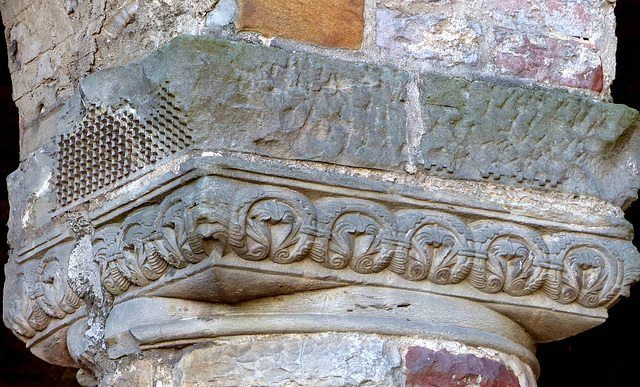Pretzien - St. Thomas
Pretzien - St. Thomas
Plötzky - St. Maria Magdalena
Bernburg - St. Nikolai
Bernburg - St. Nikolai
Bernburg - St. Nikolai
Bernburg - St. Nikolai
Bernburg - St. Nikolai
Bernburg - St. Stephani
Bernburg - St. Stephani
Bernburg - St. Stephani
Nienburg - St. Marien und St. Cyprian
Nienburg - St. Marien und St. Cyprian
Nienburg - Kloster Nienburg
Nienburg - Kloster Nienburg
Calbe - Roland
Calbe - Post
Calbe - St. Stephani
Calbe - St. Stephani
Hecklingen - St. Georg und St. Pancratius
Hecklingen - St. Georg und St. Pancratius
Hecklingen - St. Georg und St. Pancratius
Frose - St. Cyriakus
Schloss Leitzkau / Sancta Maria in Monte
Schloss Leitzkau
Schloss Leitzkau
Magdeburg Börde
Groß Ammensleben - Kloster
Groß Ammensleben - Kloster
Groß Ammensleben - Kloster
Groß Ammensleben - Kloster
Hillersleben - Kloster
Hillersleben - Kloster
Hillersleben - Kloster
Stendal - St. Marien
Stendal - St. Marien
Stendal - St. Marien
Stendal - St. Marien
Stendal - St. Marien
Stendal - St. Marien
Arneburg - St. Georg
Arneburg - St. Georg
Arneburg - St. Georg
Stendal - St. Peter
Stendal - St. Peter
Location
Keywords
Authorizations, license
-
Visible by: Everyone -
All rights reserved
-
29 visits
Schloss Leitzkau / Sancta Maria in Monte


After the Slavs were defeated, Leitzkau became a base for Christian missions. In 1114, the bishop of the Brandenburg diocese had a stone church of St. Petri built and appointed Leitzkau as the provisional seat of the diocese in place of the cathedral chapter in Brandenburg that had been destroyed and occupied by the Slavs in 983.
In 1133 a Premonstratensian monastery was established here with the task of missionizing the areas. Three years later, the Bishop of Brandenburg took up his seat in Leitzkau, which was temporarily given the status of a cathedral chapter. After St. Peter's Church no longer met the requirements despite an extension in 1140, the bishop ordered the construction of a new collegiate church in 1147. The three-nave basilica "Sancta Maria in Monte" was inaugurated in 1155.
Just ten years later, Leitzkau lost his position after the destroyed cathedral chapter in Brandenburg had been restored. The monks' convent then quickly fell into poverty and had to sell the monastery property.
In 1535, as a result of the Reformation, the Brandenburg Elector Joachim II decreed the dissolution of the monastery. In 1564 the buildings were sold to the colonel and mercenary leader Hilmar von Münchhausen.
He began to convert the existing Romanesque buildings, some of which had already fallen into disrepair, for his purposes. A rectangular palace complex was formed from the former convent building. The monastery church was rebuilt into the castle church, whereby the side aisles and the chancel were demolished and the transept was converted into a granary, the north tower was shortened by half. Hilmar's son Statius increased the eastern wing of the convent to the so-called "Althaus" and had the cloister walled up, while he rebuilt the "Neuhaus" on the foundations of the western wing of the convent from 1593.
Since father Hilmar and son Statius had already erected several Renaissance buildings in the Weser-Ems area, in particular Schwöbber, the new and old houses were also built in this style, using local stonemasons and master builders; Leitzkau is considered an eastward shifted Weser Renaissance “island” in the middle of the Saxon Renaissance area. By 1600, the former monastery of canons was transformed into a Renaissance castle.
In 1133 a Premonstratensian monastery was established here with the task of missionizing the areas. Three years later, the Bishop of Brandenburg took up his seat in Leitzkau, which was temporarily given the status of a cathedral chapter. After St. Peter's Church no longer met the requirements despite an extension in 1140, the bishop ordered the construction of a new collegiate church in 1147. The three-nave basilica "Sancta Maria in Monte" was inaugurated in 1155.
Just ten years later, Leitzkau lost his position after the destroyed cathedral chapter in Brandenburg had been restored. The monks' convent then quickly fell into poverty and had to sell the monastery property.
In 1535, as a result of the Reformation, the Brandenburg Elector Joachim II decreed the dissolution of the monastery. In 1564 the buildings were sold to the colonel and mercenary leader Hilmar von Münchhausen.
He began to convert the existing Romanesque buildings, some of which had already fallen into disrepair, for his purposes. A rectangular palace complex was formed from the former convent building. The monastery church was rebuilt into the castle church, whereby the side aisles and the chancel were demolished and the transept was converted into a granary, the north tower was shortened by half. Hilmar's son Statius increased the eastern wing of the convent to the so-called "Althaus" and had the cloister walled up, while he rebuilt the "Neuhaus" on the foundations of the western wing of the convent from 1593.
Since father Hilmar and son Statius had already erected several Renaissance buildings in the Weser-Ems area, in particular Schwöbber, the new and old houses were also built in this style, using local stonemasons and master builders; Leitzkau is considered an eastward shifted Weser Renaissance “island” in the middle of the Saxon Renaissance area. By 1600, the former monastery of canons was transformed into a Renaissance castle.
- Keyboard shortcuts:
Jump to top
RSS feed- Latest comments - Subscribe to the comment feeds of this photo
- ipernity © 2007-2024
- Help & Contact
|
Club news
|
About ipernity
|
History |
ipernity Club & Prices |
Guide of good conduct
Donate | Group guidelines | Privacy policy | Terms of use | Statutes | In memoria -
Facebook
Twitter

Sign-in to write a comment.